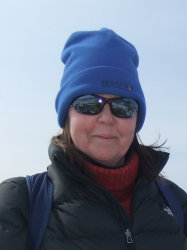Summary
How to join us
I welcome enquiries from prospective graduate students and postdocs. Studentships and postdocs tend to be funded through specific grants in the UK, so these will be advertised here whenever they get approved for funding.
Students with an excellent academic record (1st class undergraduate and a distinction in a relevant Masters level course) might be eligible for an Imperial College PhD studentship. Contact me if you would like to develop a project.
I welcome enquiries from overseas students or postdoc who have identified potential funding routes.
Current postdocs interested in applying for independent research fellowships are encouraged to contact me if you are interested in conducting geophysical research at Imperial. We have had several successful fellowship applications in recent years and I would be happy to help in putting together a competitive application. Research fellowships typically require an outstanding publication record or other evidence of scientific potential.
Research interests:
I am an Earth scientist with broad interests in geology, geophysics, and geodynamics. I specialise in marine methods and often go to sea on expeditions to collect data such as controlled source reflection and refraction seismology; sidescan sonar and multibeam bathymetry. I use these data to investigate a range of topics (see below).
Mantle plumes and continental breakup
A key question in the study of volcanic continental margins is whether their huge volumes of magmatism is caused by mantle plumes (temperature and/or chemical anomalies in the mantle), lithospheric anomalies or by enhanced mantle flow at breakup. These alternative mechanisms predict different temporal and spatial patterns in the observed magmatism. We are investigating these relationships at a number of locations through a combination of seismic interpretation (active source wide-angle and reflection) and finite element numerical modelling. Current collaborations include ION-GXT (South Atlantic) and NAG-TEC (North Atlantic). For more information see:
Magmatism and breakup in the South Atlantic
Beyond hotspots: magmatism at rifted margins
The solid Earth water cycle
Subduction zones are the locations of the largest exchange of material from the surface to the deep Earth. However, currently we have little information on the passage of volatiles through this system, and have been unable to attempt any form of mass balance to estimate how much of it enters the deep interior. In 2015-17 we collected field data in the Caribbean, with a year-long broad-band ocean-bottom seismic array, an active source experiment with 150 ocean-bottom seismometer deployments, and installation of seismometers along the island arc. We will conduct a joint inversion of these data, with the aim of establishing whether the along-strike pattern of water within the incoming plate controls the melting that forms the volcanic island arc. The results will be verified by considering how any spatial patterns would map into basalt chemistry. For more information see:
Volatile recycling at the Lesser Antilles Arc (VOILA)
Island Britain or “Brexit 1.0”
For much of our pre-history, a permanent land bridge existed between England and France at the Dover Strait. How or when it was removed, however, was until recently unknown. Following a grant for a suite of high-resolution sonar, I conducted the first ever multi-beam bathymetric survey of the UK continental shelf, which led to the discovery of a megaflood landscape carved into the floor of the English Channel. This feature could only be formed by a catastrophic failure of the rock ridge, resulting in the sudden isolation of Britain from continental Europe. This dramatic event significantly altered the pattern of human colonisation of Britain. For more information see:
How Britain became an Island (Imperial College Festival Talk - video)
Island Britain: acoustic imaging of a catastrophic flood terrain on the floor of the English Channel
For further information on these and other projects see:
Formation and evolution of continental shelves, passive margins, ocean basins and ocean islands.
Environmental geophysics, marine processes and physical properties of the seabed.
About Me:
I am a member of the Geodynamics: Core to Surface research group
See here for my Google Scholar profile, here for my ReserachGate profile...and here @geophysicsjenny for twitter!
I am former President of the British Geophysical Society (2015-18)
Biography:
- Professor, Imperial College London, 2018-date
- Reader, Imperial College London, 2010-18
- Senior lecturer, Imperial College London 2002-10
- Lecturer, Imperial College London 1998-02
- NERC Fellow, University of Cambridge 1996-98
- Lecturer, University of Leeds 1995-96
- Post-doctoral researcher, University of Oxford 1990-94
- PhD, University of Cambridge 1986-89
- MSc, University of Durham 1985-86
Publications
Journals
Perez-Gussinye M, Collier JSS, Armitage JJJ, et al., 2023, Towards a process-based understanding of rifted continental margins, Nature Reviews Earth & Environment, Vol:4, Pages:166-184
Hicks S, Bie L, Rychert C, et al., 2023, Slab to back-arc to arc: fluid and melt pathways through the mantle wedge beneath the Lesser Antilles, Science Advances, Vol:9, ISSN:2375-2548, Pages:1-14
Lindner M, Rietbrock A, Bie L, et al., 2023, Bayesian regional moment tensor from ocean bottom seismograms recorded in the Lesser Antilles: implications for regional stress field, Geophysical Journal International, Vol:233, ISSN:0956-540X, Pages:1036-1054
Allen RW, Collier JS, Henstock TJ, 2022, The role of crustal accretion variations in determining slab hydration at an Atlantic subduction zone, Journal of Geophysical Research. Solid Earth, Vol:127, ISSN:2169-9356
Bie L, Hicks S, Rietbrock A, et al., 2022, Imaging slab-transported fluids and their deep dehydration from seismic velocity tomography in the Lesser Antilles subduction zone, Earth and Planetary Science Letters, Vol:586, ISSN:0012-821X, Pages:117535-117535

